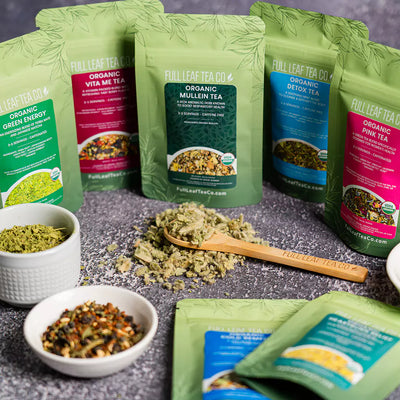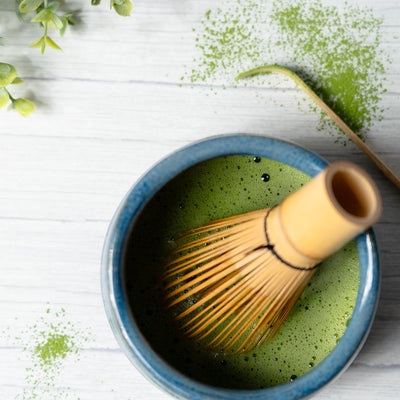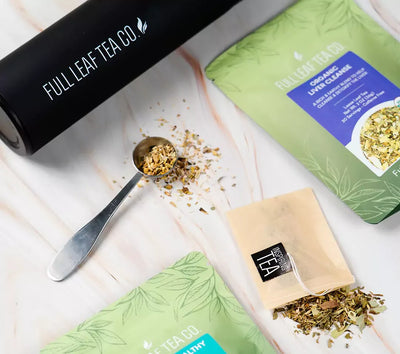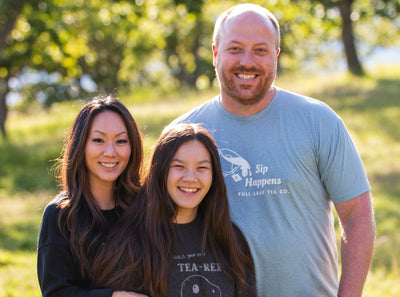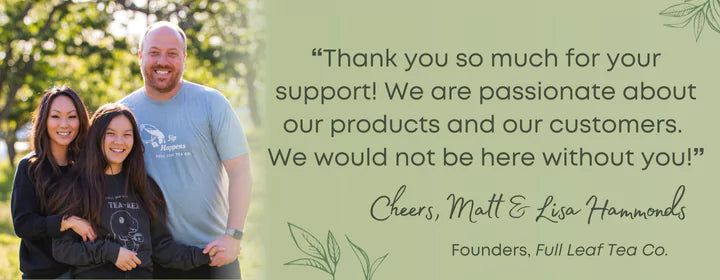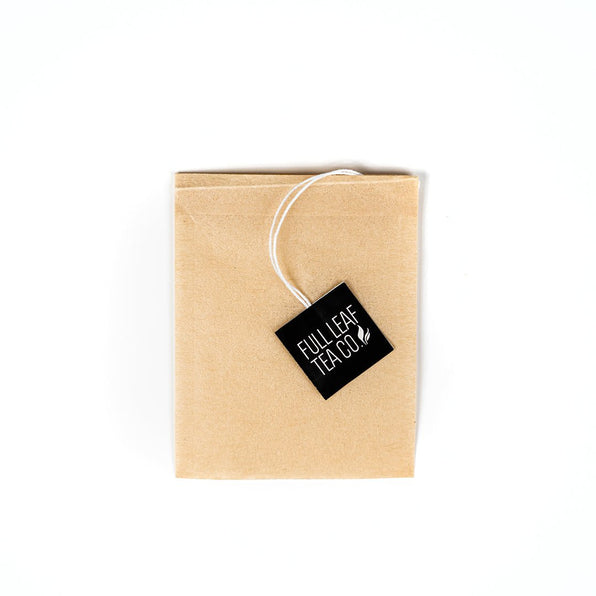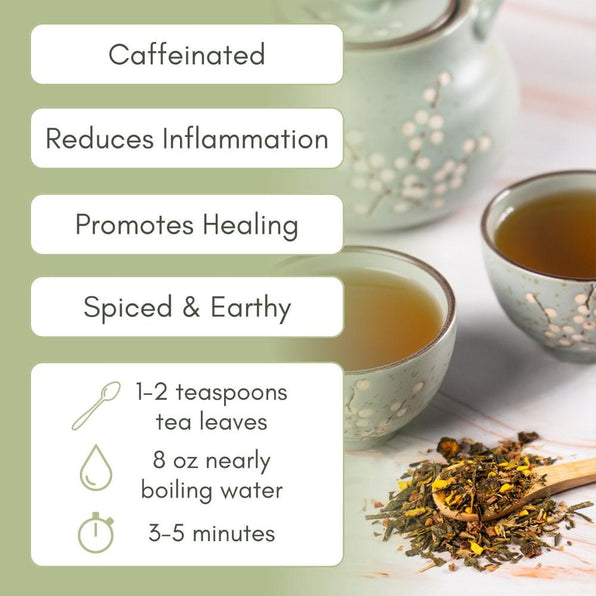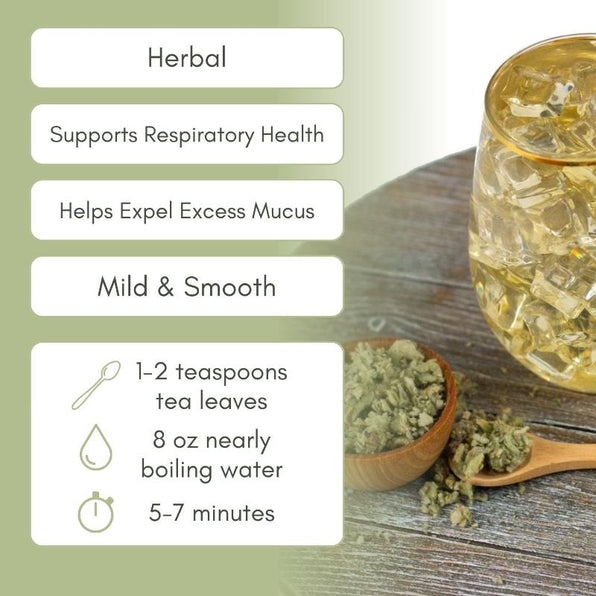What is Loose-Leaf Tea?
Loose-leaf tea is a tea that is sold in bulk, consisting of whole or partially broken leaves, as opposed to the finely ground tea found in tea bags. The history of loose- leaf tea dates back thousands of years to ancient China, where it was discovered and initially used for medicinal purposes.
Over time, it became a popular beverage enjoyed for its flavor and health benefits. The tradition of brewing loose-leaf tea has been passed down through generations and has spread across the world, becoming an integral part of many cultures. Loose-leaf tea is known for its superior quality and richer flavor compared to bagged tea, as it allows for better water flow and expansion of the leaves during steeping, resulting in a more aromatic and flavorful cup of tea.

Loose-leaf tea is often considered superior to tea bags because it retains more of its natural oils and antioxidants, which are responsible for the tea's flavor and health benefits. When brewed, these oils are released, resulting in a richer, more complex flavor profile and a higher concentration of beneficial compounds such as polyphenols and catechins.
These antioxidants are known for their ability to reduce inflammation, improve heart health, and boost the immune system. As a result, choosing loose-leaf tea not only enhances the overall tea-drinking experience but also maximizes the potential health benefits of each cup.
Why is Loose-Leaf Tea Better?
Loose-Leaf Tea
Flavor and Aroma:
Loose leaf tea tends to be fresher and offers a more complex and nuanced flavor profile.
Quality:
Loose leaf tea generally consists of whole or larger pieces of leaves, which retain more of their natural oils and compounds, leading to a richer taste and greater health benefits.
Variety and Customization:
With prebagged tea, your options for variety and customization are limited, as each bag is pre-measured and the brewing time is often standardized, restricting your ability to tailor the strength and flavor to your liking.
Environmental Impact:
Loose leaf tea is more eco-friendly, as it generates less waste compared to prebagged tea,
Cost-Effectiveness:
While loose leaf tea might seem more expensive upfront, it can actually be more cost-effective in the long run. Since it is of higher quality, you can use less tea per cup and often re-steep the same leaves multiple times, getting more value out of each purchase.
Pre-Bagged Tea
Flavor and Aroma:
Prebagged tea, which often contains smaller, broken leaves that can result in a more muted taste and aroma
Quality:
Prebagged teas, on the other hand, often contain dust and fannings, which are the remnants from broken tea leaves.
Variety and Customization:
With loose-leaf tea, you have a wider range of varieties to choose from, and you can control the strength and flavor of your brew by adjusting the amount of tea and steeping time according to your personal preference.
Environmental Impact:
Prebagged tea often includes individual packaging, such as wrappers, tags, and strings, which can add to environmental waste.
Cost-Effectiveness:
Due to its generally lower quality, you may need to use more bags to achieve the desired flavor, and the inability to re-steep the same bag multiple times can result in higher overall costs.
How Can I Steep Loose Leaf Tea?
When you are first starting out with Loose-Leaf Tea, we like to offer some semblance of pre-bagged tea. For this instance, we carry our Natural Paper Drawstring Tea Bags! These empty tea bags are created out of unbleached, natural paper with no dyes or chemicals! They are sealed by a heat press and cinch-able with a cloth string on the top to ensure no leaves escape into your cup! These bags are a lovely transition into our loose-leaf world!
How Long Should Loose Leaf Tea Steep?
When brewing loose-leaf tea, it's important to note that each type of tea has its own optimal steeping time to fully extract its unique flavors and aromas. For example, delicate green teas may require a shorter steeping time to prevent bitterness, while robust black teas can benefit from a longer infusion to develop their full-bodied taste. Understanding these differences ensures that each cup of tea is brewed to perfection, enhancing your overall tea-drinking experience.
Steeping Times and Temperatures:
- Green Tea: 2-4 Minutes at 175°F
- Black Tea: 3-5 Minutes at 210°F
- Herbal Tea: 5-7 Minutes at 210°F
- Oolong Tea: 5-7 Minutes at 210°F
- Pu-erh Tea: 3-5 Minutes at 210°F
- White Tea: 2-4 Minutes at 175°F
- Mate: 2-4 Minutes at 175°F

